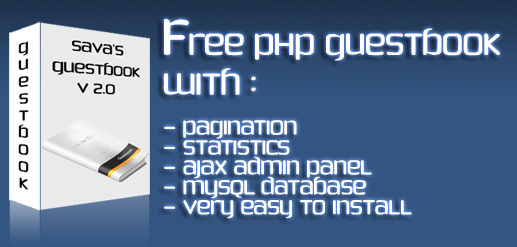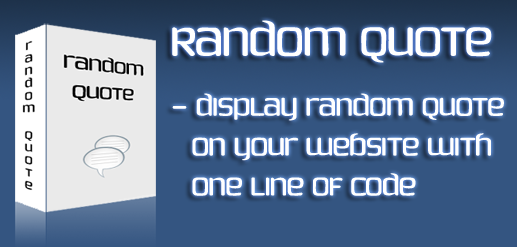Clean Rooms for Partnerships: Privacy‑Preserving Audience Overlap
If you’re working with partners and want to uncover shared audience insights without risking sensitive data, clean rooms offer a practical solution. These environments let you collaborate securely, ensuring personal information stays private and compliant with industry standards. But how do clean rooms actually protect your data, and what makes them different from traditional sharing methods? There’s more to it than just technology—privacy and trust are reshaping how companies work together.
Understanding the Concept of Data Clean Rooms
Data clean rooms facilitate secure collaboration by allowing organizations to work with external partners on data analysis without disclosing sensitive information.
These environments are designed to meet privacy regulations, such as the General Data Protection Regulation (GDPR), while still providing analytical insights. They employ privacy-preserving technologies, including differential privacy and secure multi-party computation (SMPC), to uphold customer privacy.
Data clean rooms play a significant role in audience overlap analysis by enabling the comparison and analysis of shared audience segments while maintaining compliance with data privacy laws.
The Role of Privacy in Collaborative Data Analysis
As organizations increasingly utilize data clean rooms for collaboration with partners, the significance of strong privacy measures becomes apparent. Establishing robust privacy protocols is essential for safeguarding sensitive data and ensuring user trust in the data-sharing process.
Data clean rooms are designed to create a secure environment where privacy-preserving analyses can take place, employing techniques such as encryption and stringent access controls to mitigate the risk of unauthorized data exposure.
Compliance with regulations such as the General Data Protection Regulation (GDPR) and the California Consumer Privacy Act (CCPA) mandates that organizations implement responsible data governance practices. This includes maintaining comprehensive audit trails, which can facilitate compliance verification and accountability in collaborative efforts.
Adopting transparent practices not only helps to minimize the likelihood of data breaches but also enables organizations to derive valuable insights while upholding the privacy of personal information in an increasingly privacy-conscious environment.
Comparing Data Clean Rooms to Traditional Data Sharing Methods
Organizations have traditionally utilized data sharing methods, such as exchanging raw data sets. However, these methods often present significant privacy risks and compliance challenges. The exchange of sensitive information can lead to privacy violations, which in turn can undermine consumer trust.
Data clean rooms, in contrast, facilitate secure collaboration through the use of privacy-preserving technologies that restrict access to aggregated data, thereby protecting individual identities.
Furthermore, data clean rooms can assist organizations in adhering to stringent regulations such as the General Data Protection Regulation (GDPR) and the California Consumer Privacy Act (CCPA) more effectively than traditional data sharing approaches. They enable organizations to analyze audience overlap securely, allowing for the generation of data-driven insights while upholding privacy standards.
Consequently, data clean rooms support the strengthening of partnerships without incurring unnecessary risks associated with data sharing.
Key Technologies Powering Privacy-Preserving Overlaps
Clean rooms are increasingly utilized for data collaboration, but their success relies on a range of sophisticated privacy technologies. One key feature is differential privacy, which helps protect individual identities during the analysis of audience insights. Additionally, secure multi-party computation (SMPC) allows for calculations to be performed on encrypted data, thus safeguarding confidentiality.
Another important aspect is privacy-preserving joins, which enable the aggregation of valuable data without disclosing personally identifiable information (PII).
Encryption techniques are also essential, as they secure data during both transmission and storage. Moreover, strict user access controls are implemented to manage team permissions effectively. Continuous privacy checks are critical for ensuring compliance with data protection regulations, allowing organizations to collaborate while adhering to established privacy standards.
Real-World Applications: Industries Benefiting From Clean Rooms
Clean rooms serve a practical purpose across various industries by enabling secure data collaboration while maintaining privacy and compliance standards. In the retail sector, businesses leverage clean rooms to analyze customer behavior and promotional effectiveness without violating privacy regulations.
Similarly, in digital advertising, clean rooms facilitate the measurement of campaign performance and audience engagement through aggregated data, ensuring that sensitive information remains safeguarded.
In the healthcare industry, clean rooms provide a controlled environment for sensitive data analysis, allowing stakeholders to examine healthcare outcomes and engage in collaborative research without compromising patient confidentiality.
The finance sector also benefits from clean rooms by detecting fraudulent activities and ensuring compliance with regulatory requirements, all while preserving sensitive financial information.
Steps in Facilitating Secure Audience Overlap Analysis
To conduct secure audience overlap analysis, begin by collecting data from various organizations within a privacy-preserving clean room environment designed to protect personally identifiable information (PII).
In these data clean rooms, employ techniques such as secure multi-party computation (SMPC) and establish privacy thresholds to facilitate audience overlap analysis while ensuring the protection of sensitive data.
It's important to establish clear roles, permissions, and privacy-preserving protocols to restrict access to authorized individuals, thereby ensuring compliance with relevant regulations.
Ongoing collaboration among stakeholders is essential for deriving actionable insights for marketing strategies.
Additionally, maintaining robust data governance is critical; this includes performing regular audits and compliance checks to foster trust and ensure responsible usage of data.
Essential Features to Consider in a Clean Room Solution
When assessing data clean room solutions, it's important to focus on features that enhance data privacy while facilitating secure collaboration.
Effective data clean rooms should incorporate strong privacy controls and privacy-enhancing technologies to protect data during audience overlap analysis. Customizable access rules and role-based permissions are crucial for managing who can access and analyze sensitive data, thereby minimizing risks associated with unauthorized access.
Additionally, audit capabilities are significant for monitoring user activity and ensuring adherence to privacy regulations. Implementing real-time privacy checks is also vital, as they allow for immediate assessments of compliance during collaborative efforts.
Finally, interoperability is an essential feature, enabling seamless integration across different platforms and data sources. This capability helps eliminate technical barriers and fosters greater collaborative opportunities among all parties involved.
Regulatory Drivers Shaping Data Collaboration Practices
As global data privacy regulations become more stringent, organizations must reassess their methods for sharing and analyzing data with partners. Key regulatory frameworks, such as the General Data Protection Regulation (GDPR) in the European Union and the California Consumer Privacy Act (CCPA) in the United States, necessitate rigorous compliance and inform the approach to data collaboration.
In response to these regulatory demands, Clean Rooms have emerged as a viable solution, providing technologies that enable organizations to extract audience insights while maintaining the confidentiality of raw data. This approach aligns with the growing trend, as approximately 71% of countries are now implementing data protection laws, necessitating secure data-sharing protocols.
The decline of third-party cookies, in conjunction with heightened privacy expectations promulgated by major technology firms, further underscores the relevance of Clean Rooms in today’s data landscape.
Ultimately, the evolving regulatory environment is compelling organizations to adopt responsible data collaboration practices that prioritize privacy and compliance.
Strategies for Building Trust and Value in Data Partnerships
Even with the implementation of advanced technologies such as secure data clean rooms, establishing trust and delivering value in data partnerships necessitates more than mere compliance with regulations.
Maintaining control over data is crucial, alongside prioritizing data governance practices. It's essential for organizations to communicate how privacy-enhancing technologies (PETs) facilitate secure data handling.
Collaboration can yield significant benefits, such as improved audience overlap insights and enhanced data analysis capabilities. Demonstrating the practical outcomes of these collaborative efforts can be instrumental in reinforcing the value for all partners involved.
Compliance with privacy regulations requires the establishment of robust consent frameworks and the ongoing maintenance of privacy policies, which serve to build trust in data partnerships while ensuring the protection of shared data.
Conclusion
By embracing clean rooms, you unlock the ability to collaborate with partners while still protecting your customers’ sensitive data. With privacy-enhancing technologies and strict regulatory compliance, you ensure insights are gathered responsibly—without exposing personally identifiable information. As clean rooms foster trust and value in data-driven partnerships, you’ll stay ahead of privacy regulations and drive impactful, privacy-first analytics. Make privacy-preserving audience overlap your foundation for secure, productive, and trustworthy collaborations in today’s data landscape.








